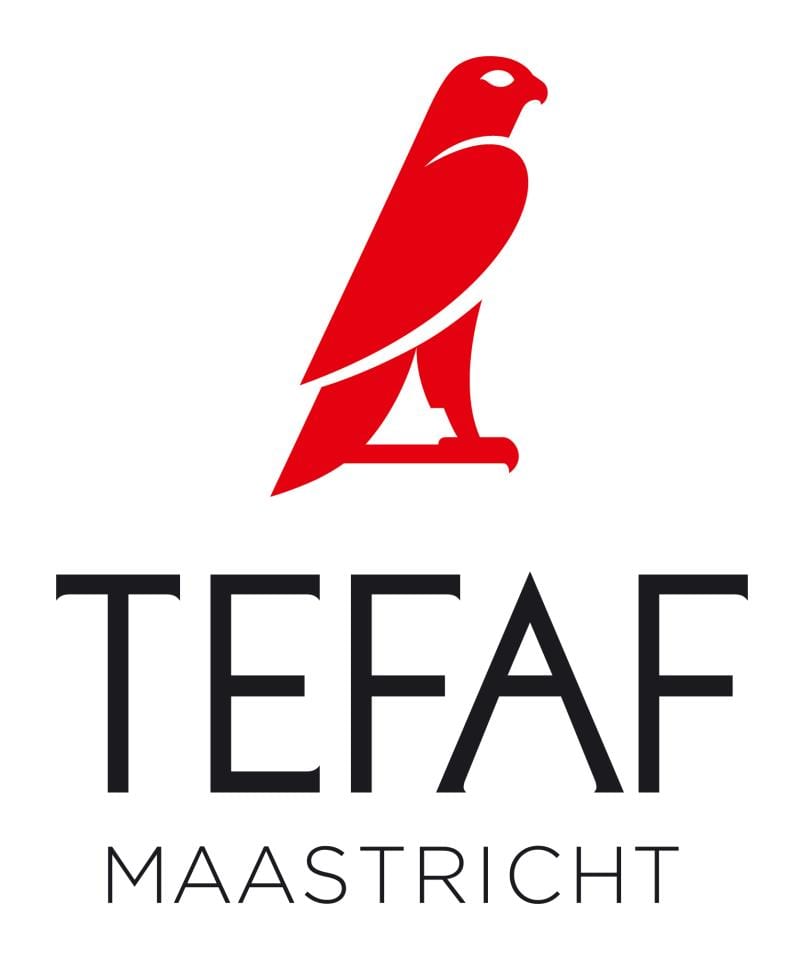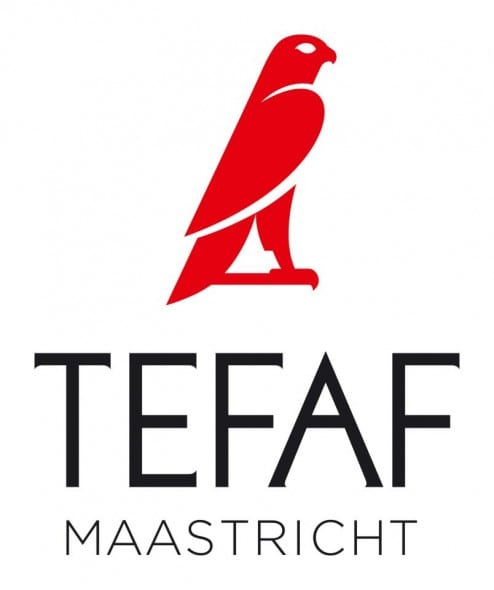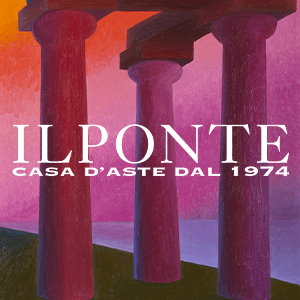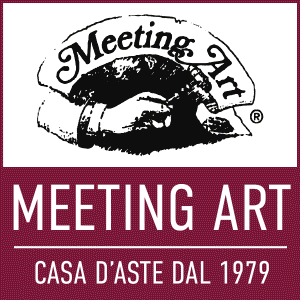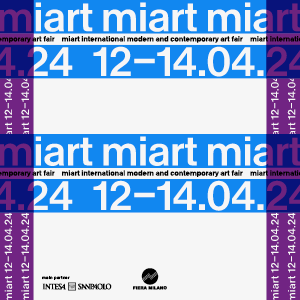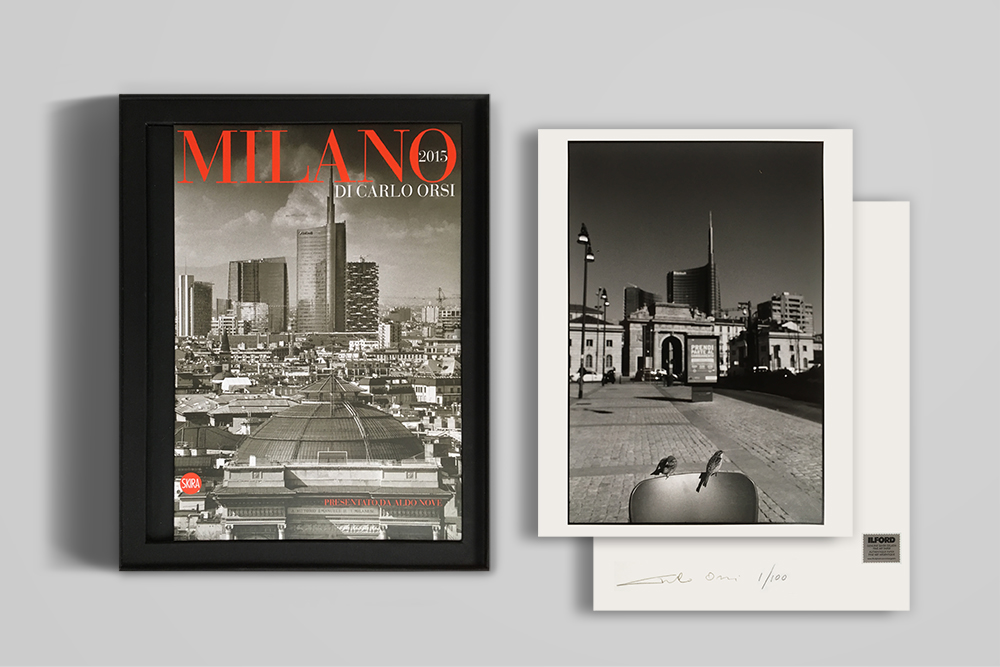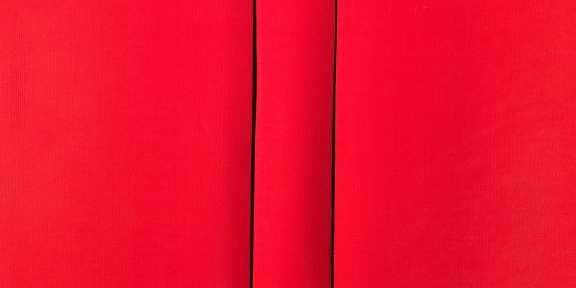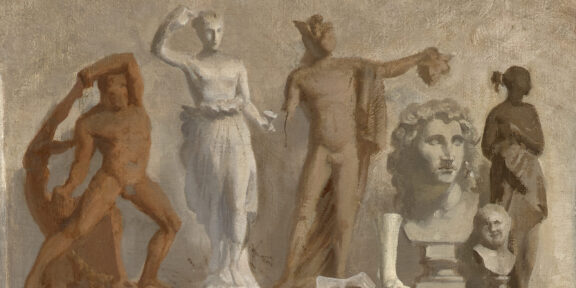TEFAF Maastricht, la più importante Fiera dell’Arte al mondo, quest’anno sarà un pochino più italiana, in riconoscimento della qualità e professionalità delle proposte degli Antiquari del nostro Paese, le Gallerie italiane che quest’anno saranno ammesse alla Fiera saranno 16, quattro in più della precedente edizione.
Quelle riconfermate sono Altomani & sons, Francesca Antonacci e Damiano Lapiccirella Fine Art, Benappi, Gianmaria Buccellati, Alessandro Cesati, Alberto di Castro, Alessandra Di Castro, Galleria Silvano Lodi & Due, Longari Arte Milano, Moretti, Piva & C., Tornabuoni Art. Le new entries sono Paolo Antonacci Antichità, Riccardo Bacarelli, Botticelli Antichità e Carlo Orsi.
__________________________
Altomani & sons
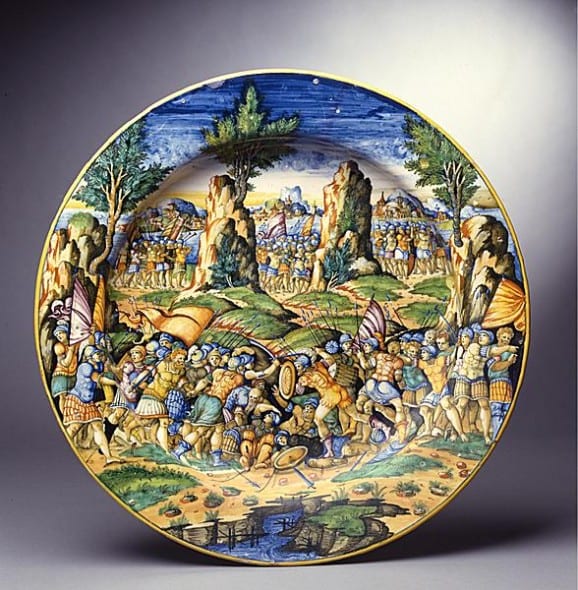
A Majolica plate with a battle scene.
Diameter 46.5 cm Circa 1535
Altomani & sons
Via Borgospesso 14
20121 Milano
T.: +39 02 20 10 33
F.: +39 02 89 07 42 51
Via Baviera 18-20
61121 Pesaro
T.: +39 0721 69237
F.: +39 0721 69237
E-mail: mail@altomani.com
URL: www.altomani.com
__________________________
Francesca Antonacci Damiano Lapiccirella Fine Art
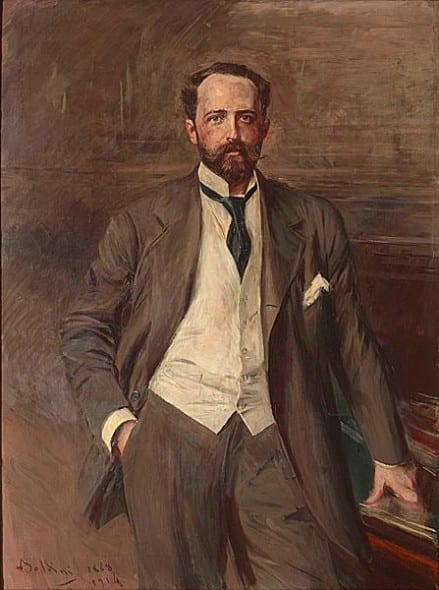
Portrait of the Marchese Boncompagni principe di Venosa
oil on canvas cm 130×95
Signed ll: Boldini 1868/1914
Provenance Turin, Accorsi collection; Rome, private collection
Literature C.L. Ragghianti e E. Camesasca, L’opera completa di Boldini, Milano, Rizzoli, 1970, p. 129, plate 527; F. Dini e P. Dini, Giovanni Boldini 1842-1931. Catalogo ragionato, Torino, Allemandi, 2002.
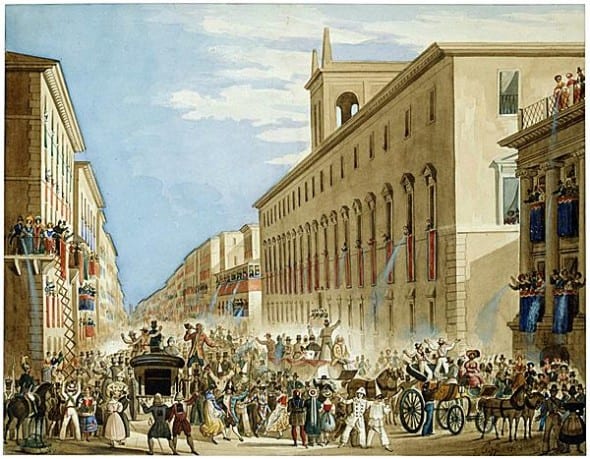
Carnival in Rome
Tempera and gouache on paper 31 x 39 cm
Signed and dated lower right ‘Caffi 1847’
Provenance Private collection, Rome. Literature Annalisa Scarpa, Caffi, Luci del Mediterraneo, Belluno, Palazzo Crepadona, 2006; Rome, Museo di Roma, 2006. Exhibited Belluno, Palazzo Crepadona, Caffi, Luci del Mediterraneo, 1 October 2005-22 January 2006; Rome, Museo di Roma, 15 February-2 May 2006, p. 161, cat. no. 63-65, Edizione Skira 2005
Francesca Antonacci Damiano Lapiccirella Fine Art
Via Margutta 54
00187 Roma
T.: +390645433036
F.: +390645433054
E-mail: info@antonaccilapiccirellafineart.com
URL: www.antonaccilapiccirellafineart.com
__________________________
Paolo Antonacci Antichità
Paolo Antonacci Antichita’ S.r.l.
Via del Babuino, 141/A
00187 Roma
Phone: + 39 06 32651679
Phone: + 39 06 32629014
info@paoloantonacci.com
__________________________
Riccardo Bacarelli
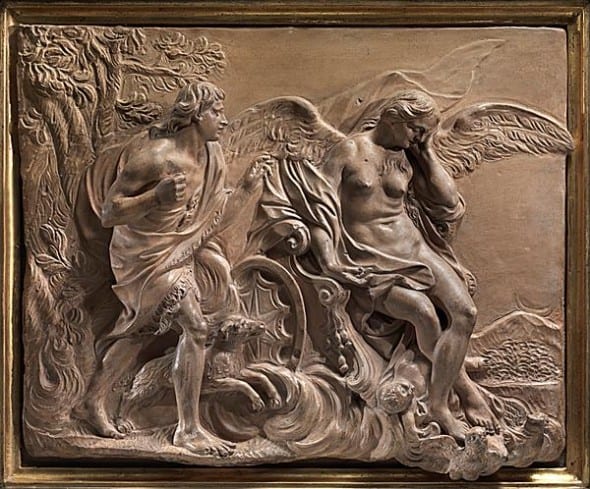
Allegory of the Night
Terracotta relief 30 x 37 cm. Florence, first half 18th century
This terracotta is the only existing model by Giovanni Casini, a pupil of Giovan Battista Foggini, for one of six bronze reliefs representing the Hours of the Day and of the Night. Interesting, these were cast and chased by Pietro Cipriani, a pupil of Foggini’s rival, Massimiliano Soldani. The attribution is confirmed by an 18th-century inventory of wax models for Doccia porcelain, which was published by Klaus Lankheit in 1982: it includes a relief of the same composition, preserved in the Museo Richard-Ginori in Sesto Fiorentino near Florence. Casini, who was also a painter, was praised as an excellent modeller by his contemporary Francesco Maria Niccolò Gabburi, a distinguished writer and art collector. The freshness of Casini’s modelling has been replaced in Cipriani’s bronzes by an exquisite finish. The series is important for its rare subject that is inspired by Michelangelo’s famous Hours of the Day (Florence, San Lorenzo, Medici Chapel). Literature K. Lankheit, Die Modellsammlung der Porzellanmanifaktur Doccia, Munich 1982, p. 139, no. 40:115, fig. 207
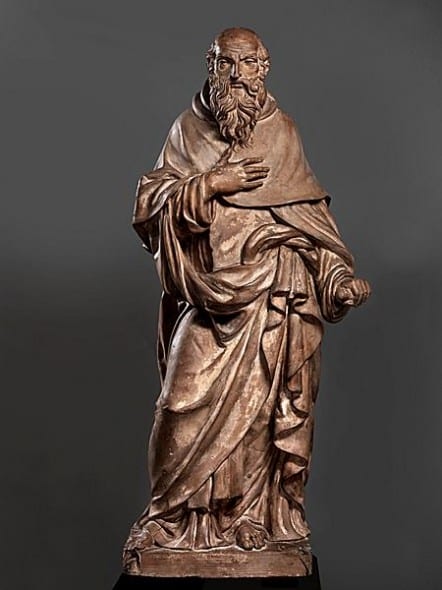
Saint Anthony Abbot
Terracotta with traces of polychrome. Height 85 cm. Circa 1510-1515
This statue of Saint Anthony Abbot consists of two parts, a front and a back section, ably joined together before firing. This was done in order to lighten its weight and to ensure a successful firing. A few hair cracks and minor firing flaws do not affect the integrity of the figure. The principal symbol of Saint Anthony Abbot is the tau-cross. Of it only the terracotta handle remains, as the staff itself must have been made of metal or wood and is now lost. Notwithstanding the loss of the staff, the saint is easily recognizable due to the canonical representation of the old abbot in his monk’s outfit, his long beard and his ample shaved skull topped by a dense crown of closely cropped hair. Among the most common attributes of Saint Anthony Abbot missing in our sculpture is the pig that is often found at his side, an allusion to the healing properties of lard in combatting the effects of shingles, which is called St. Anthony’s Fire in Italian. The absence of the pig is perhaps deliberate in order to concentrate more intensely on the noble serenity of the pose. The characteristics of style and the qualities found in the sculpture allow us to firmly attribute it to one of the best Florentine sculptors working in the modern style at the turn of the 16th century, Bartolomeo di Giovanni d’Astorre Sinibaldi, more commonly known as Baccio da Montelupo. For a further study of his work, c.f. J.D. Turner, The Sculpture of Baccio da Montelupo, Ph.D. thesis, Brown University, Providence, Rhode Island, 1997.
In spite of the absence of any direct documentary evidence, it is likely that Baccio was apprenticed in a workshop which brought him into direct contact with the young artists studying in the Garden of San Marco under the aegis of Lorenzo the Magnificent. Furthermore, it is likely that his master was Benedetto di Maiano. From Benedetto he likely acquired his technical skill that allowed him to work in all sculptural media. The influence of Maiano can be seen in this Saint Anthony Abbot despite having been shaped by Baccio nearly twenty years after Benedetto di Maiano’s death.
It is not possible to say with certainty whether the Saint Anthony Abbot was made as a model for a larger figure in marble or bronze or an end to itself. The fact that it has been preserved to the present day and the fact that there are traces of polychromy might lead one to surmise that it was made as an end to itself. There is a possibility that the terracotta was made for the pieve (parish church) of San Lorenzo in Segromigno near Lucca, as is suggested by a 1519 payment to the sculptor for “uno Sancto Antonio” rediscovered by Prof. Francesco Caglioti (who first advanced the attribution of the terracotta to Baccio).
Riccardo Bacarelli
Via dei Fossi 33R
50123 Firenze
T.: +39 055 21 54 57
F.: +39 055 28 20 13
E-mail: bacarelli@bacarelli.com
URL: www.bacarelli.com
__________________________
Benappi
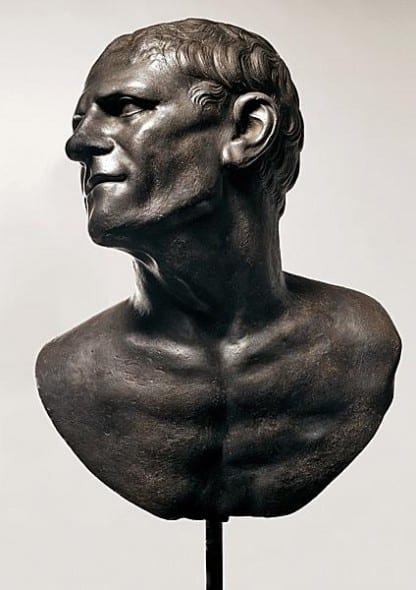
Roman general
Led-tin alloy, modelled fully in the round
52 x 37 cm London, citca 1750
After the so called Generale Romano, marble bust,2nd century AD, in the Museo Nazionale, Naples. Provenance Collection Wallraff
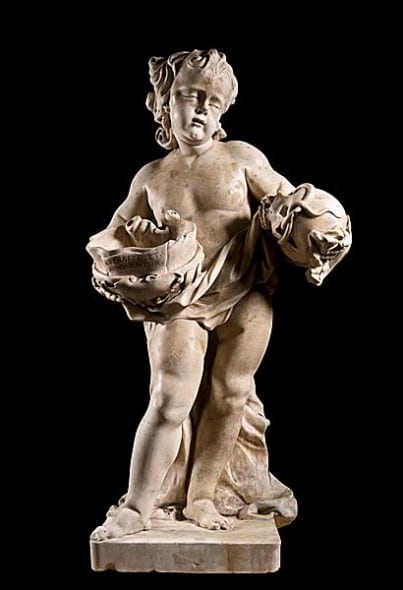
Putto with stoup and skull
Marble, sculpted fully in the round
Height 135 cm Rovereto (?), circa 1750 Literature Andrea Bacchi, Luciana Giacomelli, Scultura in Trentino – Il Seicento e il Settecento, Trento, 2003,vol. II, p. 312, fig. 334
Benappi
Via Andrea Doria 10
10123 Turin
Italy
T.: +39 011 88 32 62
__________________________
Botticelli Antichità
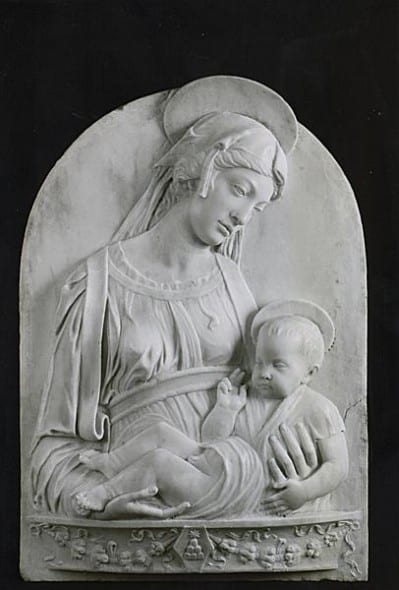
Madonna and Child
White marble relief from a lost model by Donatello (the Madonna Piccolomini) 60.3 x 40.6 cm, 1465
This bas-relief has an interesting provenance history. Before entering the prestigious von Pannwitz collection in Berlin, it was in Florence, in the collection of the Italian connoisseur and art dealer Stefano Bardini. The sculpture is clearly recognizable in an old photograph that shows it together with many other reliefs in the Bardini gallery-palace in Florence. This stucco relief is ascribable to that group of works of art by Antonio Rossellino known as the “candelabra Madonnas”, name given by the two lighted candelabras in the Virgin background. The prototype of this group is the terracotta bas-relief at the Victoria and Albert museum, datable around 1465-70. This English version seems to be hanging in balance between the vibrant and dynamic compositions of Rossellino’s early maturity, like the “Altmann Madonna” in the Metropolitan Museum and the Madonna in the monument for “the Portuguese Cardinal” in San Miniato al Monte, and the later more severe and solid production, like the “Madonna with Child” in the Nori family memorial in the Church of S. Croce or the “Adorations” in the Bargello museum, both in Florence, and in the Church of S. Anna in Naples (1473-1476). Of this group of stucco bas-relief (Candelabra Madonnas) exist two sizes: a larger one, which is nearly identical to the Victoria and Albert Museum terracotta, and a smaller size version. This Madonna belongs to the smaller size group, that presents many variations, either in the decorative motifs, the background details, and in the framing of the work of art. Others examples of this smaller version, are the one in Reggio Emilia ( Contrada dell’Asineria), the one in Berlin (Staatliche Museum), a terracotta one in Cremona (Museo Civico) and the one carved in Istria stone in Venice (Calle della Pieta’).
Provenance Musatti collection, Florence; Walter and Catalina von Pannwitz collection, Berlin and Heemstede; Private collection, USA
Literature O. von Falke, Die Kunstsammlung von Pannwitz, II, Skulpturen und Kunstgewerbe, Munich 1925, p. 14, no. 134, plate XXXI; G. Gentilini, Collezione Chigi Saracini. La scultura, Siena, 1989, pp. 80-98, no 19; F. Caglioti, exh. cat. Da Jacopo della Quercia a Donatello. Le arti a Siena nel primo Rinascimento, Siena, Santa Maria della Scala Museum, 2010, pp. 348-353, no D. 21
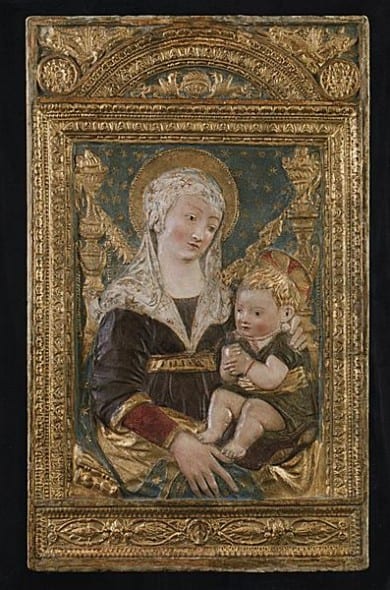
Madonna and Child
Polychrome stucco bas-relief in ‘Schiacciato style’ with original gilded stucco frame 81.3 x 56 cm. Provenance Stefano Bardini collection, Florence; Walter and Catalina Von Pannwitz collection, Berlin; Private collection, USA. Literature C.L. Ragghianti, ‘Scultura a Budapest’, in Critica d’Arte, XLI, 1976, 147, pp. 67-71; P. Lorenzelli, A. Veca exh. cat. Una moda antiquaria, in TRA/E Teche, pissidi, cofani e forzieri dall’Alto Medioevo al Barocco, Bergamo-London, 1984, pp. 271-288; V. Sgarbi, Domenico di Paris e la scultura a Ferrara nel Quattrocento, Milan 2006; F. Petrucci, Da Firenze marmi e terrecotte invetriate: Antonio Rossellino e Andrea della Robbia per Ferrara, in Crocevia Estense. Contributi per la storia della Scultura a Ferrara nel XV secolo, Ferrara 2007, pp. 151-188; G. Gentilini, F. Ortenzi, Dal rilievo alla pittura. La Madonna delle Candelabre di Antonio Rossellino, Firenze 2008
Botticelli Antichità
Via Maggio 39R
50125 Firenze
T.: +39 055 230 20 95
F.: +39 055 230 20 95
E-mail: botticelliantichita@botticelliantichita.com
URL: www.botticelliantichita.com
__________________________
Gianmaria Buccellati
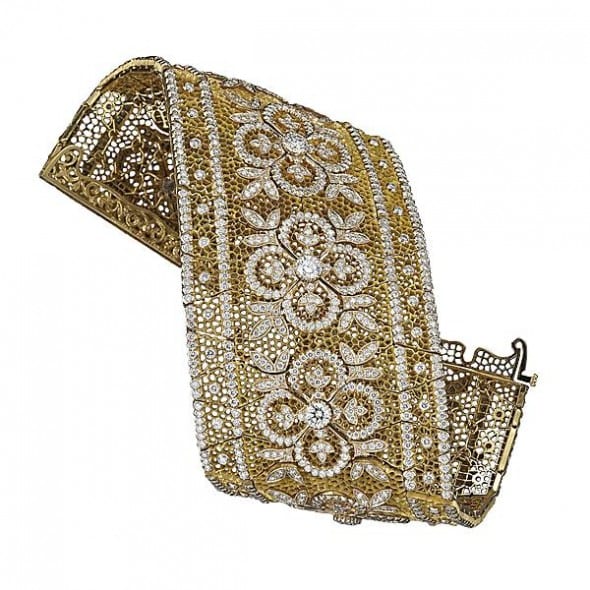
Ducale
Tulle bracelet, yellow gold and diamonds. Spearhead of the Italian goldsmith’s excellence, jeweler among the most sought-after by royal houses, celebrities and high finance personalities, valiant supporter of the goldsmith’s techniques dating back to Renaissance times, Buccellati proposes a bracelet which is a true simbol of his style. The inspiration directly comes from the Doge’s Palace, facing St. Mark’s square in Venice: the texture is soft, the lines of its design are light, the floral motifs of the palace’s façade are reproduced all along the band in yellow gold, set with brilliant-cut diamonds and enhanced by a contour of leaves. The elegant rhythm of flowers and leaves, and the vibrating emotion of the exclusivity of the jewel, make this bracelet a true symbol of what Buccellati handcrafting skills can do: at Buccellati’s, everyone is professional because they preserve the experience of more than a century of presence on international markets, and this renders the brand a true milestone in jewelry making.
Gianmaria Buccellati
Via L. Mancini 1
20129 Milano
T.: +39 02 54 56 633
F.: +39 02 55 18 74 96
E-mail: info@buccellati.it
URL: www.buccellati.it
Via Montenapoleone 23
20121 Milano
T.: +39 02 76 00 21 53
4, Place Vendôme
75001 Parigi
T.: +33 1 42 60 12 12
F.: +33 1 49 27 98 04
__________________________
Alessandro Cesati
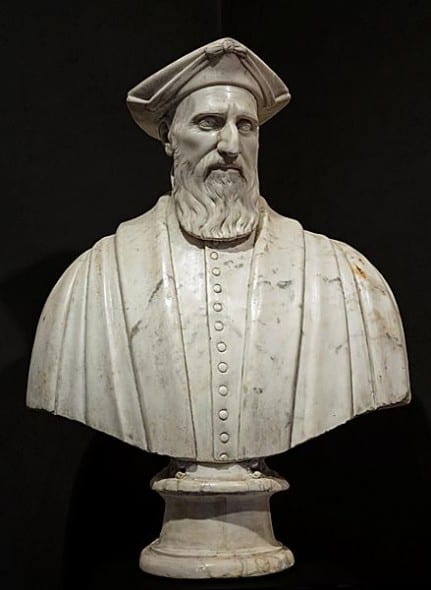
Portrait Bust of Battista Cicala Zoaglio (1484-1565) senator of the Most Serene Republic of Genoa
Carved marble. Height 89 cm. Circa 1560
Literature R. Spinelli, ‘I busti scolpiti e una novità’, in Giovan Antonio Dosio, da San Giminiano architetto e scultor fiorentino tra Roma, Firenze e Napoli, by Emanuele Barletti, Ente Cassa di Risparmio di Firenze, Florence, 2011, pp. 205-209
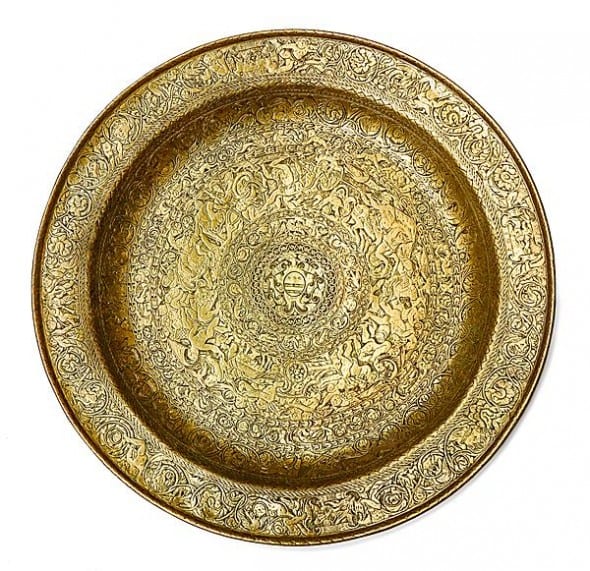
Engraved brass. Diameter 47 cm. Venice, circa 1550
The coat-of-arms in the middle of the dish corresponds to that of Francesco Donà , Doge of Venice from 24 November 1545 to 23 May 1553.
Alessandro Cesati
Via San Giovanni sul Muro 3
20121 Milano
T.: +39 02 86 46 09 28
F.: +39 02 72 02 16 64
E-mail: info@cesatiecesati.com
URL: www.cesatiecesati.com
__________________________
Alberto Di Castro
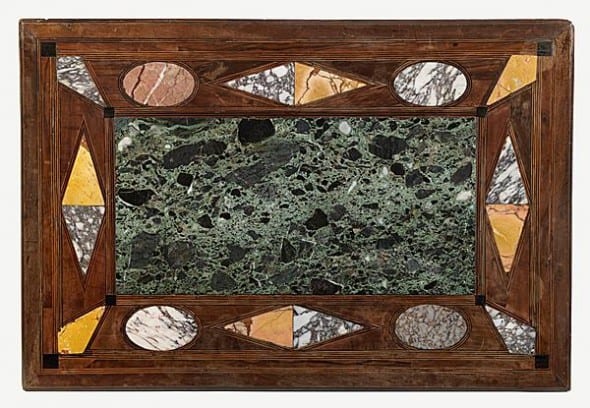
With coloured marble tiles set in a rectangular walnut background: large quadrangle of Verde Antico placed centre, alternating inlays of triangle-shaped Giallo Antico and Breccia di Settebasi, together with four alternating oval inlays in Portasanta and Breccia di Settebasi. 111 x 75 cm Rome, end 18th century
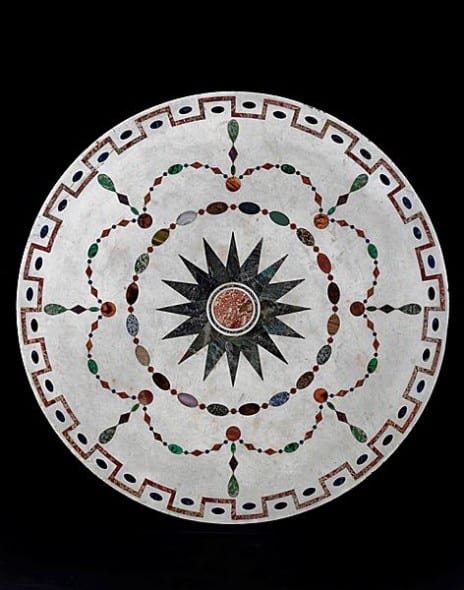
Round table top
With geometric inlay of hardstone and coloured marble on a white marble background. Three-legged base in mahogany, with gilt bronze decorations.
Diameter 87 cm. Height base 77 cm. Rome, circa 1810
Alberto Di Castro
Piazza di Spagna 5
00187 Roma
T.: +39 06 679 22 69
F.: +39 06 678 74 10
E-mail: info@dicastro.com
__________________________
Alessandra Di Castro
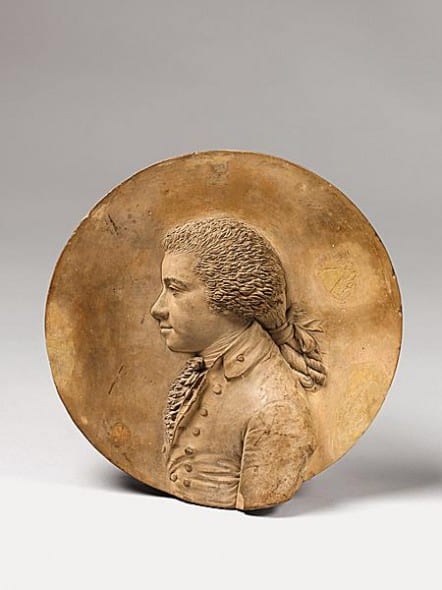
A terracotta plaque
With a left-facing profile portrait, in period costume, of Carl Fredrik Fredenheim (1748–1803), master of ceremonies at the court of King Gustav III of Sweden and superintendent and director of the Royal Academy of Fine Arts in Stockholm. Fredenheim was in Rome, while on the Grand Tour, from March 1788 to March 1789. Diameter 18 cm. Signed and dated on the lower edge ‘Jos. Angelini October 21 / 1788 / faciebat’ Rome, 1788
Giuseppe Angelini was one of the most important sculptors working in Rome during Pope Pius VI Braschi’s long reign in the last quarter of the 18th century. After travelling to London with Thomas Banks and spending several years there, from 1770 to 1778, he returned to Rome and began to frequent Roman Senator Abbondio Rezzonico’s progressive cultural circle. Earning the praise of Antonio Canova when the latter arrived in Rome in 1779, Angelini carved a full-figure statue of Giovanni Battista Piranesi in the Classical style for the Roman church of Santa Maria del Priorato on the Aventine Hill in 1780. Angelini’s work -both new subjects and copies of Classical statues- were sent to Poland, England and Sweden thanks to the strong ties that he had forged with the Swedish court through Francesco Piranesi, King Gustav III’s art agent and a good friend of the sculptor.
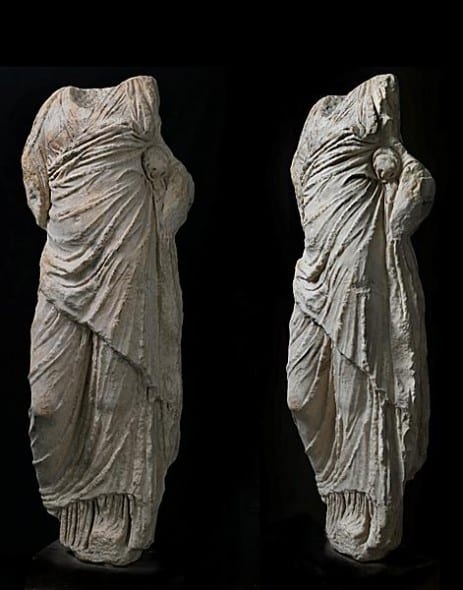
Ivory154 x 54 x 31 cm
Roman Imperial period, end 2nd century AD
Provenance With David Jones Gallery, Sidney, 1981
Alessandra Di Castro
00187 Roma
T.: +39 06 69 92 31 27
F.: F +39 06 69 79 00 70
__________________________
Galleria Silvano Lodi & Due
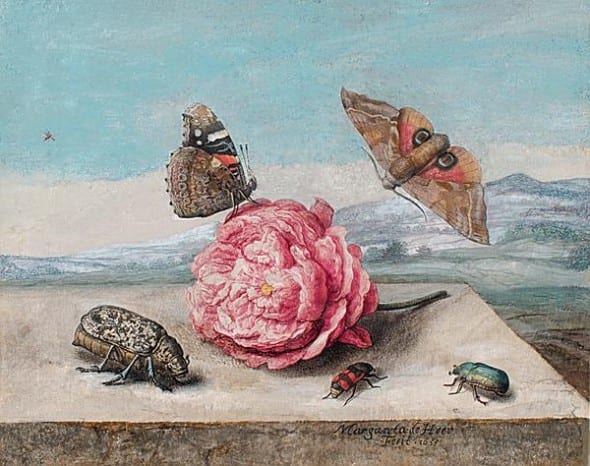
Butterflies and Beetles around a Rose on a Stone Ledge
Gouache on vellum. 15.6 x 19.4 cm
Signed and dated ‘Margareta. de Heer/ Fecit. 1655’
Provenance Private collection, Netherlands
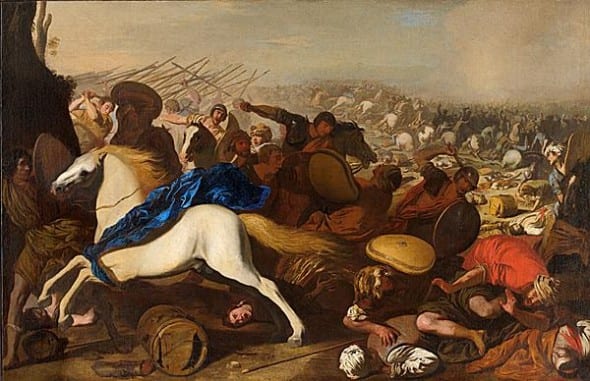
Battle Scene between Turks and Christians
Oil on canvas. 66 x 101 cm, Circa 1645
Literature Nicola Spinosa, La Libertà del Segno, Nuove Proposte di Pittura Antica, Galleria Silvano Lodi & Due, 2013, pp. 42-53
Galleria Silvano Lodi & Due
Via San Primo 6
20121 Milan
Italy
T.: +39 02 79 91 51
F.: +39 02 79 92 25
E-mail: info@gallerialodi.com
URL: www.lodiedue.com
__________________________
Longari arte Milano
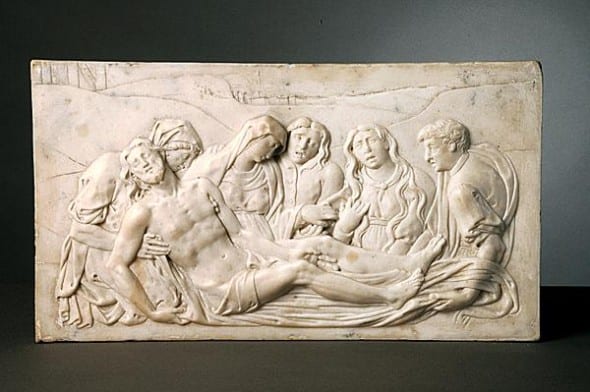
Lamentation of Christ
White Carrara marble. 38 x 21.5 x 3 cm. Naples
This is a work of art that one may immediately be drawn to on account of the refinement of the marble grain, the mellowness and the brilliance of the patina and the quality of the workmanship, all factors revealing a hand that was able to graduate the different depths of the composition by means of employing minimum variations, with stiacciato low relief effects. The size and the shape of the small panel, which was probably originally intended to be placed between a structure that would also act as its frame, suggest that it might come from a small altarpiece connected to private devotion or from the predella of a marble altarpiece. The recognition of the figurative models in this Lamentation scene shows the author’s familiarity with the Neapolitan artistic tradition in the first half of the Sixteenth century and, in particular, with the works of Giovanni Marigliano da Nola. Among those sculptors who, between the 30’s and 40’s of the Sixteenth century, started collaborating intensely with Giovanni da Nola’s workshop, it was Annibale Caccavello who, culturally-speaking and in his particular style, seemed to correspond to a greater degree to the author of our Lamentation. Indeed, the young sculptor proved able to interact with the master and contributed all the wealth of his own personal figurative experience that had become consolidated by having studied not only Marigliano’s models but also by having studied those of Bartolomé Ordóñez and his brilliant Neapolitan collaborator, Girolamo Santacroce. These were two sculptors who, in early Sixteenth-century Naples, were the precursors of an intense and expressive language, full of abbreviated shapes, even deformed shapes, rendered with a technique – particularly in the case of relief – that preferred a compressed low relief stiacciato, as with Donatello’s later work, in which the figures slot in with each other and accentuate the sentimental power in their features and gestures.
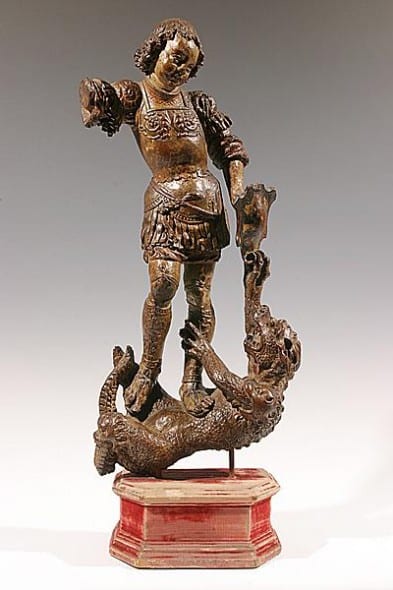
Master wood-carver, influenced by Andrea del Verrocchio
Statuette in three dimensions carved in wood, but left unfinished behind (some losses where the carving ran across the grain of the wood), with traces of original polychromy, notably on the face.
45 x 21.5 x 8 cm. Venice, circa 1475
The statuette corresponds remarkably closely with an important – much larger, and better preserved – statue that forms the focus of the altar of a chapel dedicated to the Archangel in the left transept of the Church of the Frari in central Venice. It is likely, given the history of the re-commissioning of the chapel in Venice in 1478 by Giacomella Trevisan, that the central St Michael, bigger and more dramatic than his companions (even the dying soldier, St Sebastian!), was added then. Now, the way in which St Michael’s armour is described in the wooden statuette, with far greater emphasis on its ornamentation all’antica, is strongly reminiscent of the Florentine Renaissance. This could have been transmitted to Venice by the presence there in the relevant decade of Andrea del Verrocchio, who was involved from 1481-1488 in making the full-scale models for the horse and rider to commemorate Bartolommeo Colleoni, which – owing to the sculptor’s Death – were cast in bronze by the local expert, Giacomo Leopardi. The statuette therefore – quite apart from its immediate charm and vivacity – may be seen as an interesting exemplar of the effect of Verrocchio’s scintillating presence in the lagoon city on native artists, one of whom – a master wood-carver – was evidently capable of absorbing and then transmitting the novel style of the Renaissance, which had been late in arriving there. The strength of character of the statuette promises that – with future increased knowledge of wood-carving in the Veneto – its talented author may eventually be determined.
Literature Fra Mario Lorandi and Fra Leopoldo Fior, Basilica of Santa Maria Gloriosa dei Frari: An Historical and Artistic Guide, Centro Studi Antoniani, Padua, 2007, pp. 50-51, fig. 70
Longari arte Milano
Via Bigli 15
Via Bigli 12
20121 Milano
Italy
T.: +39 02794287
F.: +39 02780322
E-mail: marco@longariartemilano.com
URL: www.longariartemilano.com
__________________________
Moretti Florence – London – New York
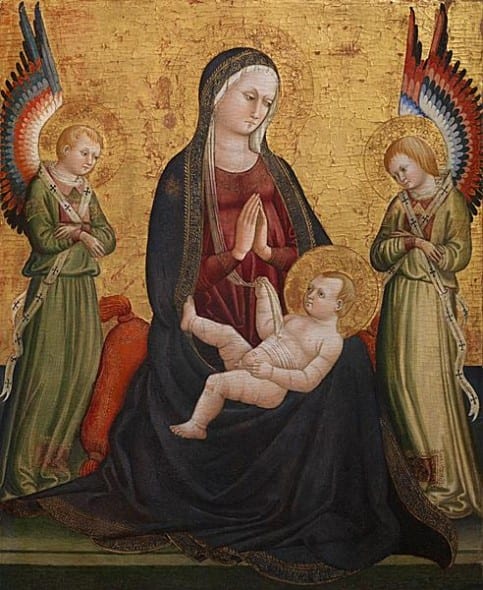
Madonna and Child with Angels
Tempera on panel
84 x 68 cm
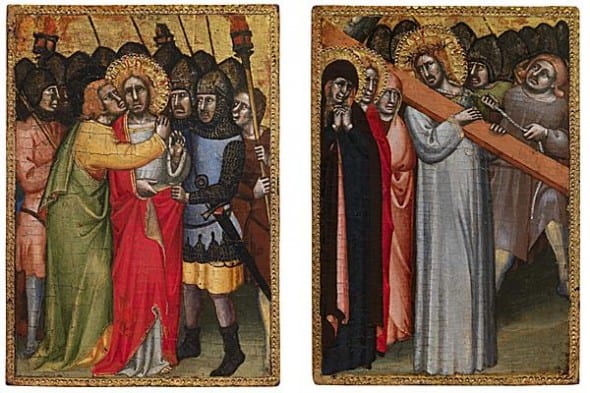
Simone di Filippo Benvenuti da Bologna, called Simone dei Crocifissi
The Betrayal of ChristThe Road to Calvary
Two panels. 19.8 x 14.6 cm and 21.3 x 14.6 cm
Provenance Dublin, Judge James Marnaghan, from 1973
Moretti Florence – London – New York
Piazza degli Ottaviani, 17/r
50123 Firenze
T.: +39 055 265 42 77
F.: +39 055 239 66 52
E-mail: enquires@morettigallery.com
URL: www.morettigallery.com
2a-6 Ryder Street
St. James’s
SW1Y 6QB London
T.: +44 207 491 05 33
F.: +44 207 491 05 53
E-mail: enquires@morettigallery.com
URL: www.morettigallery.com
24 East 80th Street
10075 New York
United States
T.: +1 212 249 4987
F.: +1 212 755 0792
E-mail: enquires@morettigallery.com
URL: www.morettigallery.com
__________________________
Carlo Orsi
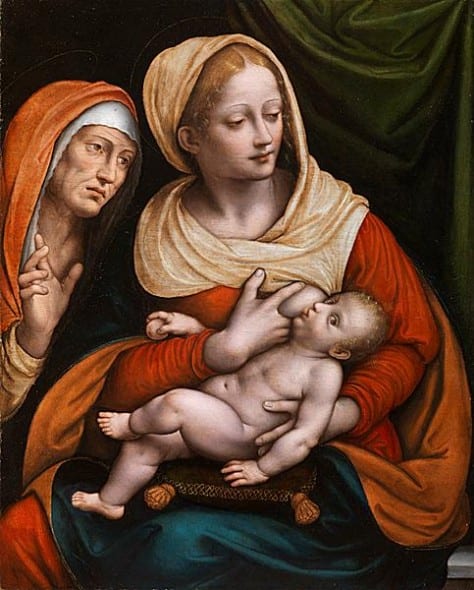
The Madonna and Child with St. Anne
Oil on panel. 64 x 51 cm Literature
The painting will be included in the forthcoming monograph on the artist now in preparation by Dr. Cristina Geddo
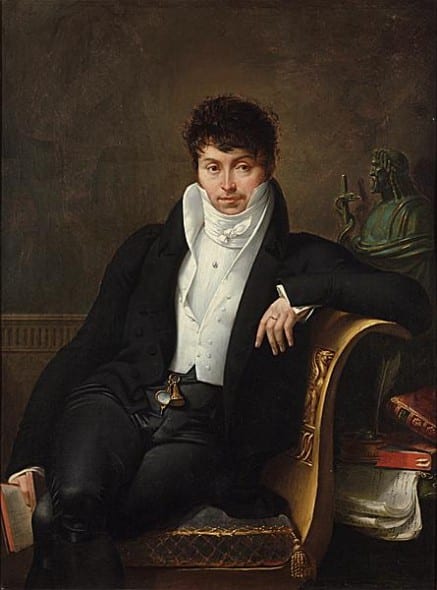
Portrait of Pierre-Jean-George Cabanis (1757-1808)
Oil on canvas 125.5 x 92 cm Signed, lower right ‘BLONDEL’
Provenance Villa Reale di Marlia, Lucca (probably purchased for Count Pecci-Blunt in Paris, circa 1922-1925)
Literature Saro Giadice, La Villa reale di Marlia, Lucca 1939, p. 88; ‘Villa Reale di Marlia’, in Connaissances des Arts, August 1957, p. 52 (showing the painting hanging in the ground floor salon)
Carlo Orsi
Via Bagutta 14
20121 Milan
Italy
T.: +39 02 76 00 22 14
F.: +39 02 76 00 40 19
E-mail: info@galleriaorsi.com
URL: www.galleriaorsi.com
__________________________
Piva & C
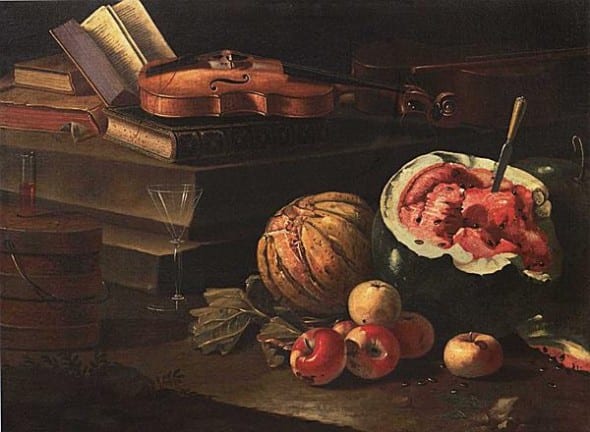
Books, Violin, Fruit
Oil on canvas. cm 86 x 113
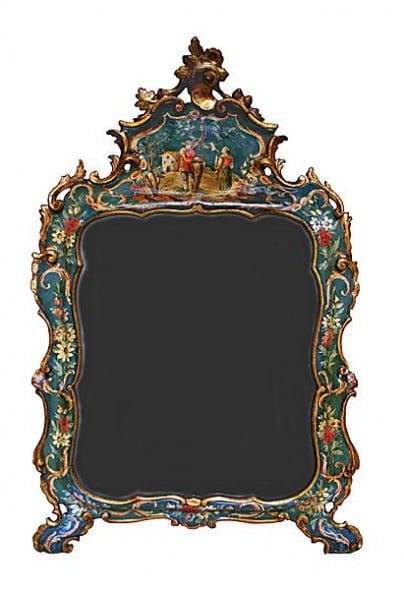
lacquered gilt-wood
cm 75 x 45 Venice, mid-18th century
Piva & C srl
via Bigli, 7
20121 Milano
T.: +39 02 76 00 06 78
via Meravigli, 18
entrance in Via S. Giovanni sul Muro
20123 Milano
T.: +39 02 36 63 26 93
__________________________
Tornabuoni Art
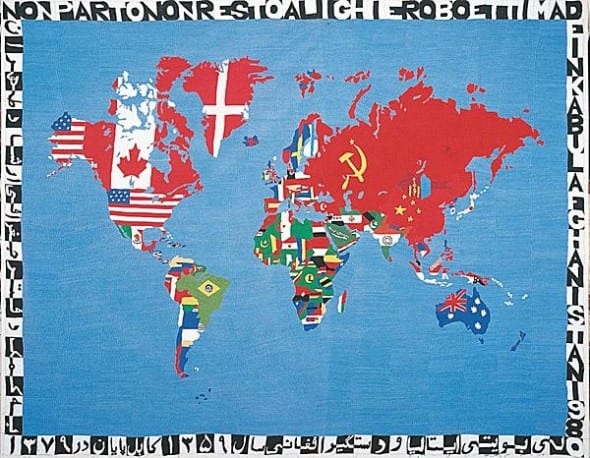
Embroidery on cloth
158 x 202 cm 1980
Exhibited Boetti Retrospective at Reina Sofía, Tate Modern, MoMA 2011-2012
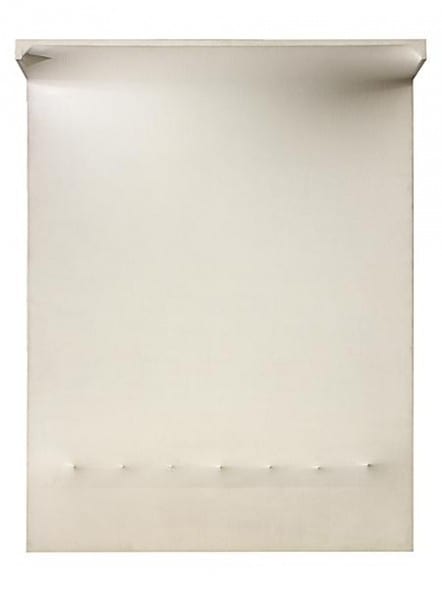
Superficie bianca n°5
Tempera on shaped canvas 146 x 114 x 30 cm
Signed on the reverse: E. Castellani Superficie bianca n° 5 1964
Provenance Galleria dell’Ariete, Milan Notizie Arte Contemporanea, Turin La Tartaruga Galleria d’Arte, Rome Collezione Primo De Donno, Foligno Galleriaforma, Genoa Literature “Castellani”, exhibition catalogue under the direction of C. Lonzi, Galleria Notizie, Turin, 1964 “Enrico Castellani”, exhibition catalogue under the direction of Adachiara Zevi, Albert Totah Gallery, New York; Edward Totah Gallery, London, 1987
“Memoria del futuro”, under the direction of Germano Celant, I.Gianelli, Bompiani, Milan, 1990, p. 182 “Enrico Castellani”, exhibition catalogue under the direction of Gillo Dorfles, Adachiara Zevi, Galleria Netta Vespignani, Rome, 1991, p. 80 “Three Artistic Generations in Contemporary Italy”, exhibition catalogue under the direction of Adachiara Zevi, Museum of Contemporary Art Helena Rubinstein Pavilion for Contemporary Art, Tel Aviv, 1993, p. 22 “The Italian Metamorphosis 1943-1968”, exhibition catalogue under the direction of Germano Celant, Progetti Museali Editore, Rome, 1994, n° 78 “”Zero Italien. Azimut/ Azimuth 1959/60 in Mailand. Und heute”, exhibition catalogue under the direction of R. Demesch-Wiehager, Galerie der Stadt Esslingen, Villa Merkel, Esslingen, 1995, p. 78
“Castellani”, under the direction of Bruno Corà, Edizioni Charta, Milano, 1996, p. 123 “Aspetti dell’arte italiana de XX secolo”, exhibition catalogue under the direction of Francesco Poli, Italo Tomassoni, Viaindustriae, Foligno, 2012, p. 166, n° 34 “Enrico Castellani. Catalogo ragionato. Opere 1955-2005”, under the direction of Renata Wirz et Federico Sardella, Skira Editore, Milan, 2012, Tome II, p. 349, n° 139 Exhibited “XXXII Biennale Internazionale d’Arte”, Giardini di Castello, Central Pavilion, room LIV, Venice, June – October 1964 “Pittura oggetto a Milano”, Galleria Arco d’Alibert, Rome, May – June 1966 “Enrico Castellani”, Galleriaforma, Genova, November – December 1972 “X Quadriennale”, Palazzo delle Esposizioni, Rome, 1972 (cat. p. 394) “Castellani”, Università di Parma, Centro Studi e Archivio della Comunicazione, Parma, April 1976 (cat. n° 43) “Identité Italienne. L’art en Italie depuis 1959”, Centre Georges Pompidou, Musée National d’Art Moderne, Paris, June – September 1981
“Enrico Castellani”, Fondazione Prada, Milan, April – June 2001 (cat. p. 191)
“L’immagine del vuoto. Una linea di ricerca nell’ arte in Italia 1958-2006”, Museo Cantonale d’ Arte, Lugano, October 2006 – January 2007 (cat. p. 229) “Enrico Castellani. Variazioni sul metodo”, The Puskin State Museum of Fine Arts, Moscow, December 2005 – January 2006 (cat. pp. 26-28-33-119)
Tornabuoni Art
16, avenue Matignon
75008 Parigi
T.: +33 1 53 53 51 51
F.: +33 1 53 53 51 50
E-mail: info@tornabuoniart.fr
URL: www.tornabuoniart.fr
Lungarno Benvenuto Cellini 13A
50125 Firenze
T.: +39 0556812697
E-mail: info@tornabuoniarte.it
URL: www.tornabuoniarte.it
___________________________
TEFAF
Maastricht – Paesi Bassi
MECC, Maastricht Exhibition & Congress Centre
100 Forum
14- 23 marzo 2014
Orari: tutti i giorni dalle 11 alle 19
23 marzo: dalle 11 alle 18
www.tefaf.com



